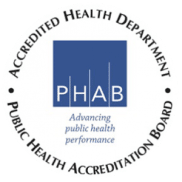What is a Healthcare-Associated Infection (HAI)?
Healthcare-associated infections (HAI) are infections caused by a wide variety of common and unusual bacteria, fungi, and viruses that develop during the course of receiving medical care.
Medical advances have brought lifesaving care to patients in need, yet many of those advances come with a risk of developing HAI. These infections related to medical care can be devastating and even deadly.
What is the ADH doing to monitor these infections in Arkansas?
Arkansas healthcare facilities have begun entering their HAI data into a database housed at the Centers for Disease Control and Prevention (CDC). This database is known as the National Healthcare Safety Network (NHSN). In January 2011, hospitals began reporting Central Line-Associated Bloodstream Infections (CLABSIs), and in January 2012, the reporting was expanded to include Catheter-Associated Urinary Tract Infections (CAUTIs) and Surgical Site Infections (SSIs). In January 2013, hospitals began reporting infections caused by Methicillin-resistant Staphylococcus aureus (MRSA) and Clostridium difficile. The ADH measures the state’s data using Standardized Infection Ratios (SIRs), which compares our state’s HAI levels with those of the nation as a whole. These SIRs are reflective of healthcare-onset infections. Healthcare-onset infections are those that develop after at least two days in the hospital. Using this information, the ADH evaluates how the state is doing and what improvements should be recommended.
What does “Standardized Infection Ratio” (SIR) mean?
The Standardized Infection Ratio (SIR) is used to compare the rates of infection among hospitals in our state to a national standard. The ratio compares the actual number of infections in our state (the “observed” number of infections) to the national rate (the “predicted” number of infections).
The “observed” number is the total number of infections that occurred in the different critical care unit types in the state. The “predicted” number is the number of infections that would have occurred if the state’s performance had been the same as the national baseline experience.
| If the SIR: | It means that: |
| Equals 1 | The state had infections at the same rate as would be predicted from national rates |
| Is higher than 1 | The state had more infections than predicted from national rates |
| Is less than 1 | The state had fewer infections than predicted |
For example, a state with a SIR of 1.50 reported 50% more infections than would be predicted from national rates. One with a SIR of 0.70 reported 30% fewer infections than the national rate.
A “central line” or “central catheter” is a tube placed into a patient’s large vein, usually in the neck, chest, arm, or groin. The catheter is often used to draw blood or give fluids or medications. It may be left in place for several weeks. A bloodstream infection can occur when bacteria or other germs travel down a “central line” and enter the blood. If you develop a CLABSI you may become ill with fever and chills or the skin around the catheter may become sore and red.
A urinary tract infection (also called “UTI”) is an infection in the urinary system, which includes the bladder (which stores the urine) and the kidneys (which filter the blood to make urine). Germs (for example, bacteria or yeasts) do not normally live in these areas, but if germs are introduced, an infection can occur. If you have a urinary catheter, germs can travel along the catheter and cause an infection in your bladder or your kidney; in that case, it is called a catheter-associated urinary tract infection (or “CA-UTI”).
What is a Surgical Site Infection (SSI)?
A surgical site infection is an infection that occurs after surgery in the part of the body where the surgery took place. Most patients who have surgery do not develop an infection. However, infections develop in about 1 to 3 out of every 100 patients who have surgery. Some of the common symptoms of a surgical site infection are redness and pain around the area where you had surgery, drainage of cloudy fluid from your surgical wound, or fever.
Staphylococcus aureus, or “Staph”, is a very common germ that about 1 out of every 3 people has on their skin or in their nose. This germ does not cause any problems for most people who have it on their skin. But sometimes, it can cause serious infections such as skin or wound infections, pneumonia, or infections in the blood.
Antibiotics are given to kill Staph germs when they cause infections. Some Staph infections are resistant, meaning they cannot be killed by typical antibiotics that are used to treat Staph aureus infections. “Methicillin-resistant Staphylococcus aureus” or “MRSA” is a type of Staph that is resistant to some of the antibiotics that are often used to treat Staph infections.
What is Clostridioides difficile?
Clostridioides difficile, also known as “C. diff”, is a germ that can cause diarrhea. Most cases of C. diff infection occur in patients taking antibiotics. The most common symptoms of a C. diff infection include watery diarrhea, fever, loss of appetite, nausea, and belly pain and tenderness.
How are Arkansas hospitals doing with Healthcare-Associated Infections?
For more information on specific hospitals in your area, please visit the Hospital Compare webpage.
Contact Information
Healthcare-Associated Infections
4815 W. Markham St., Slot 42
Little Rock, AR
Phone: 501-280-4368


